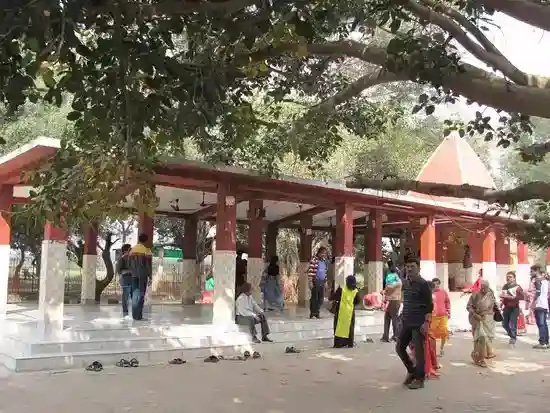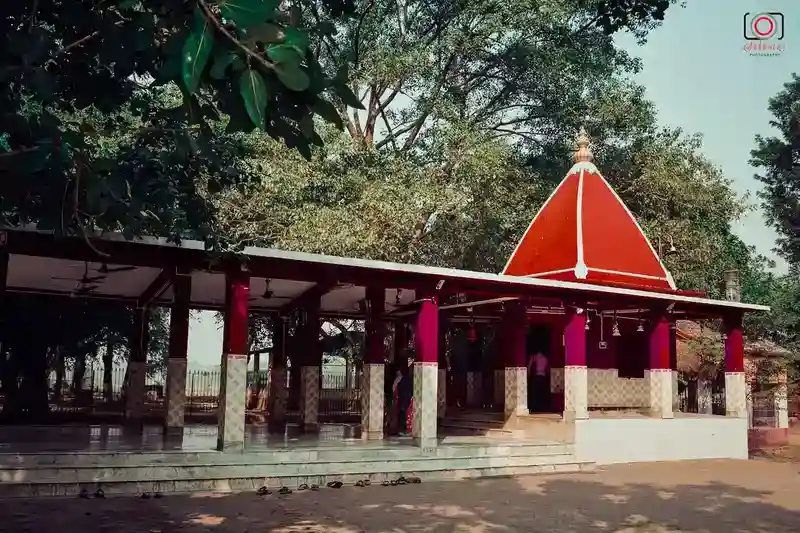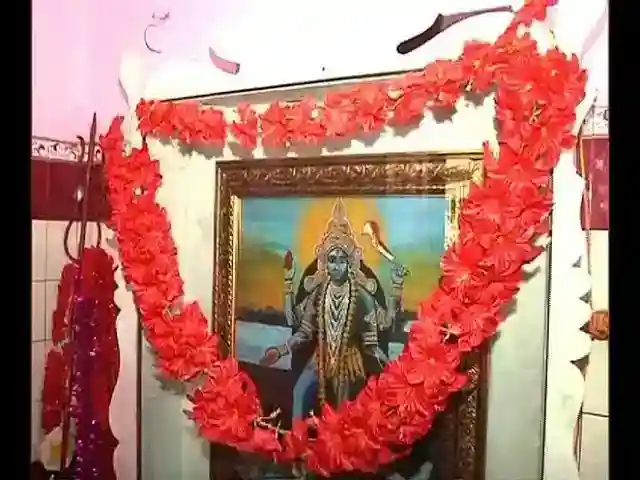Maa Kankalitala Temple: History | Significance | Architecture
Tue - Feb 21, 2023
6 min read
Share
In the Bolpur subdivision of Birbhum district in the Indian state of West Bengal, there is a town known as Kankalitala that is home to several temples.The current Kankalitala Town is one of the Shakthi Peethas where the goddess Parvati's bones fell. The distance from Bolpur to it on the Bolpur-Labhpur route is around 9 kilometres (5.6 miles). On the banks of the Kopai River is where it is located. There are various temples here, among them the most revered and famous is Maa Kankalitala Temple.
Book Maa Kankalitala Online Puja!

Maa Kankalitala Temple:
Maa Kankalitala Temple is one of the Shakti Peethas in West Bengal like Tarapith and others. Located in the interiors of Bolpur District, West Bengal, this temple is known to be highly worshipped and is visited by many pilgrims every year due to its auspiciousness. The main deities worshipped here are Maa Parvati and Lord Shiva. The major festivals celebrated here are Navratri and Shivratri.
History:
The Shakti Peethas' creation is the subject of Kankalitala's most famous mythology. In opposition to his wishes, Sati, the daughter of Prajapati Daksha, wed the god Shiva. Daksha organized a magnificent yajna but did not invite Shiva or Sati. Uninvited, Sati arrived at the yajna site where Daksha disregarded both Sati and Shiva.
This insult was too much for Sati to handle. Devi Sati, therefore, sacrificed herself by plunging into the Havan fire that her father King Daksh had set. Lord Vishnu divided her body into 51 pieces with his Sudarshan chakra as Lord Shiva was rushing across the earth carrying it. Out of those 51 pieces, this is where Sati's "Waist" descended from. Kankal means “Bones”, as the bones are believed to have fallen here mainly from the “waist” region, thus the name “Kankalitala”.
Legendary Significance:
Along with the fabled account of how the Shakti-Peeth temple was built following Sati's self-immolation during Dakshya's Yajna, the mythology of the monstrous Kala Pahar is also well-known in the area of the Kankalitala temple in Bolpur. According to tradition, the tenacious Kala Pahar, a Muslim general, shattered the upward base of the swayambhu shiva lingam at this temple in the 16th century, when Bengal was governed by the Afghan Pathan warrior Sulaiman Khan Karrani, who was the Mogul Ruler Akbar at the time. The Hindu temples from the past should be destroyed, according to this Kala Pahar. The first Kamakhya Devi temple in Assam was likewise destroyed by the terrible general.The well-known Shaktipeetha Darshan Yatra of West Bengal includes this temple.

Importance of this temple:
This temple is believed to fulfill one’s desires and prayers to God. A large number of devotees visit this temple every year because of the following reasons:
1. To seek Salvation(Nirvana/Moksha)
2. To attain good wealth and fruitfulness
3. For the purpose of Health improvement
4. For the purpose of Vehicular purchases
5. To educate Oneself and all.
Architecture:
Perhaps the most straightforward Shakti-Peeth is this one. A painting of Goddess Parvathi can be found inside the unadorned building with a pyramidal design. Even though Goddess Kali appears in the image, she is revered as Goddess Parvathi throughout history. The goddess is joined by Her divine partner Shambhu Baba or Ruru Bhairav, who is dedicated as a Shiva Lingam in the Shiva Temple near the complex's entrance. The marble floors are paved. However, the Shiva lingam is buried, and worshippers must spout water and sacrifices into the pit where the lingam has shattered. The lingam was formerly enormous, but it was destroyed during the infamous Kala Pahar's invasion of Islam in the 16th century.
By the temple, the complex contains a calm pond. Where the bones of Devi Sati fell is known as the temple Kunda. Visitors are drawn in by the Kankalitala Temple's terracotta decorations at the entryway. If devotees so choose, they may also tour the harikath, where the Goddess is offered animal sacrifices, as well as the crematorium, where dead bodies are burned on pyres.
Art:
The Garbhagriha, which in Sanskrit means "womb chamber," is a small area of the main temple in Kankalitala that is covered by a curved pyramidal roof and embellished with a metal spire. A raised platform in the form of a rectangle, known as the nat mandir, is attached to this. The temple's major devotional picture is visible directly from this nat mandir, which also provides a haven from the sun's oppressive beams for worshippers.
The Kund (Sanskrit for "holy tank/pond") next to the temple is without a doubt the most blessed feature at this shakti peeth, despite the fact that the Kali symbol in the mandir's centre could seem to be the center of attention. This Kund is a tiny, shallow pond that is enclosed by a sturdy concrete wall and enclosed by red fencing. The barrier next to the temple is unlocked, and stairs descend to the sacred water of the Kund. The Kund, a pond that has been revered from those early times, is in fact the goddess of Kankalitala's original form.
Idol:
No metal, stone, or clay statue of a deity is present here. A framed artwork of the goddess Kali perched atop her husband Lord Shiva is the object that the purohits at Kankalitala are responsible for maintaining. It appears that the goddess here who is referred to as Kankali and Kali are sometimes confused with one another.

Culture:
In addition to having around 14 shakti peethas, West Bengal is well-known for being a "mini-India" due to its varied geographical and cultural characteristics. Back to Bengal's culture: Bengal has always been renowned for its rich culture, both before and after the country's split. From Darjeeling to the Sundarbans, and from Purulia to the Birbhum region known as "Rarh," each of the provinces has an own cultural style. West Bengal has effectively established a mark for its exclusive aesthetics in the global landscape, beginning with Bengali music, dance, theatre, literature, and art. This is in addition to the delicious cuisine.
Nearby attractions:
Other than Maa Kankalitala Temple, we have several tourist attractions in Kankalitala,Bolpur. They are listed as follows:
1. Visva-Bharati University
2. Sonajhuri Shanibarer Haat
3. Tarapith
4. Khoai Garden
5. Amar Kutir
Festivals:
Many festivals are celebrated throughout this year in this temple. The major festivals celebrated with pomp and show are listed below:
1. Shivratri
2. Durga Puja
3. Navratri
4. Deepavali
5. Kali Puja
6. Annakuta
7. Holi
8. Sharad Purnima
9. Dussehra
10. Makar Sankranti
11. Sawan Puja
12. Rathayatra
Among these festivals, the most popular festival is Shivratri. On this day, arati and bhog distribution is done in a grand way. Thousands of pilgrims visit this temple on this day.
Temple Rituals:
Snana and nitya puja is performed for the deities. But as part of worshipping the Goddess, the custom of collective prayers is still observed today.
Special Rituals:
The priests do specific pujas for the gods at major festivals and events. For Shiv Bhakts, Sravan is the holiest time of year. There are numerous Kanwariyas gathered at the Kankalitala Temple to pour water over Her Bhairav-Ruru Dev at the Shakti Peeth. During the month of Shravan, the Kanwariyas typically gather Ganga water and transport it in their Kalash to the Shiva shrines (Gregorian- July).
Temple Location:
West Bengal, PP8C+HC4, Distt, Kankalitala 731204, Bolpur Labh Pur Road
Darshan Info and Dress Code in Maa Kankalitala Temple:
The temple is open to worshippers from 6:00 AM to 8:00 PM. Tuesdays and Saturdays are significant days for deity worship, much like in other Shakti-Peethas.
There is no dress code for this temple. Traditional wear is preferred though.
Bhog/Prasad is distributed regularly from 12 pm to 2 pm.
Book Maa Kankalitala Online Puja!
Share